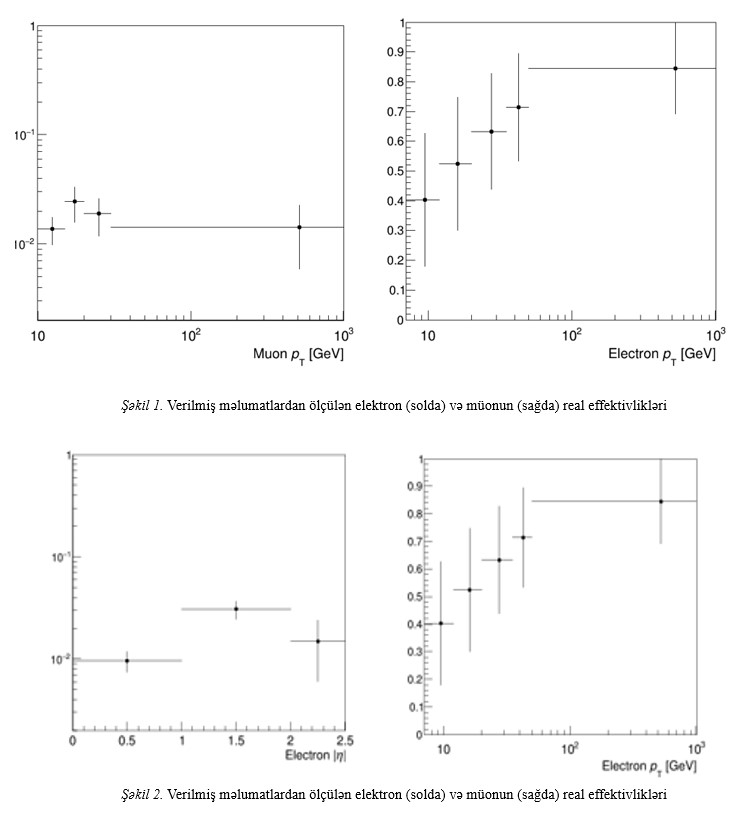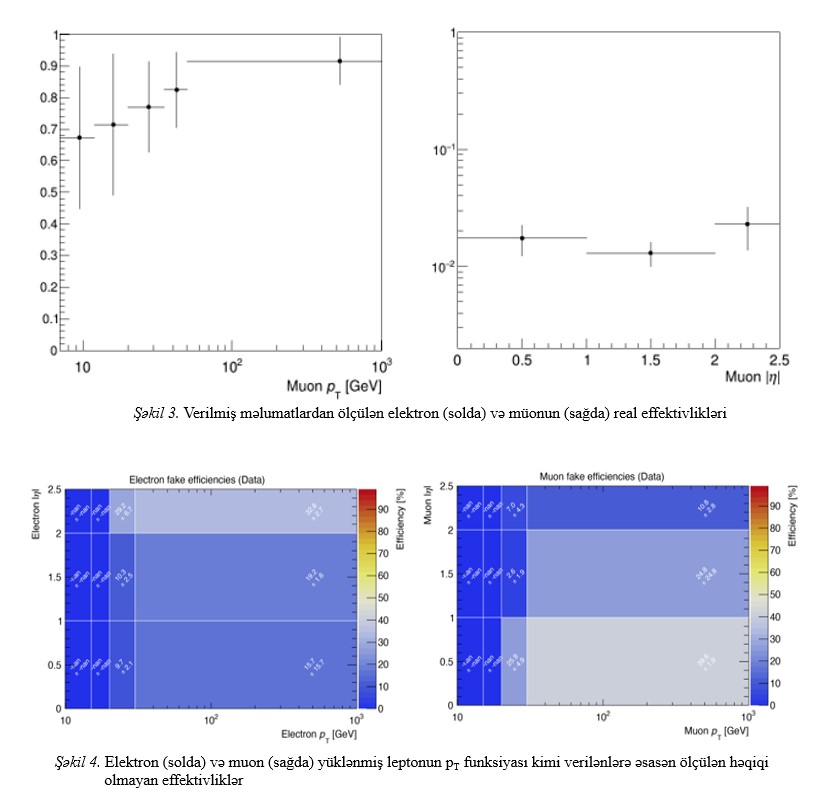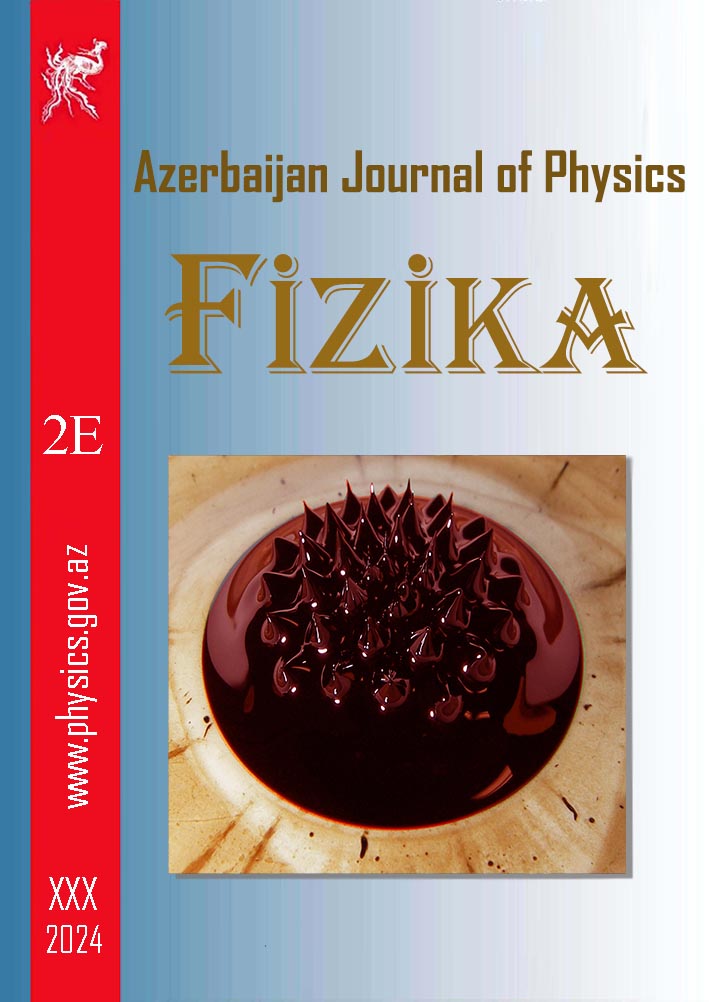ABSTRACT
This paper describes the basic idea behind the Matrix Method (MM), the data-driven approach used to the estimate the fake lepton background in the tHq(bb) channel. Novelty
of research consists the use of new efficiency maps calculated for one lepton in the final state in semileptonic decay mode of top quark. The method relies on a different
response of the prompt and fake electrons/muons to identification, isolation and impact parameter requirements. The method uses data events selected with the same criteria
as in the pre-selection region, but with looser light-lepton selections. The leptons passing the nominal selection cuts are referred to as tight leptons in the following,
while leptons passing the looser criteria are denoted as loose leptons. The fake and prompt efficiencies for electrons and muons are defined as the probabilities of a fake
or real electron or muon to pass the nominal electron/muon requirements and are measured in dedicated control regions enriched in real and fake leptons. Both fake and real
efficiencies are parametrised in pT and |η| of the respective electron or muon.
Keywords: Creation of Higgs boson, estimation of non-real lepton, Matrix method, effective maps of a lepton
PACS: 12.40.Yx
DOI:-
Received: 31.01.2023
AUTHORS & AFFILIATIONS
Institute of Physics Ministry of Science and Education Republic of Azerbaijan, 131 H.Javid ave, Baku, AZ-1143, Azerbaijan
E-mail: nguseynov@jinr.ru
Graphics and Images



Fig.1-2 Fig.3-4 Fig.5-6
|
REFERENCIES
[1] I.R. Boyko, N.A. Huseynov and O. A. Koval. Monte Carlo study of associated Higgs Boson production with a single top quark, Physics of Atomic Nuclei, 2022, Vol. 85, № 2, p.167–175. ATLAS Collaboration, ATLAS-CONF-2014-058, September 30, 2014,
[2] Estimation of non-prompt and fake lepton backgrounds in final states with top quarks produced in proton-proton collisions at √s=8 TeV with the ATLAS detector., Phys. Lett. B 716, 1, 2012.
[3] M. Aaboud, O. Abdinov and et. al. Electron reconstruction and identification in the ATLAS experiment using the 2015 and 2016 LHC proton–proton collision data at √𝑠 =13 TeV, The European Physical Journal C volume 79, Article number: 639, 2019.
[4] Varnes, Erich W. A Poisson likelihood approach to fake lepton estimation with the matrix method, arXiv:1606.06817, 2016,p.1-24.
[5] Thomas P.S. Gillam and Christopher G., Lester. Improving estimates of the number of ‘fake’ leptons and other mis-reconstructed objects in hadron collider event JHEP11(2014) 031.
[6] The ATLAS collaboration. Aad, G., Abbott, B. et al. Search for supersymmetry at 𝑠√ = 8 TeV in final states with jets and two same-sign leptons or three leptons with the ATLAS detector. J.High Energ. Phys. 2014, 35 (2014).
[7] G. Aad et al.(ATLAS Collab.), ATL-COM-PHYS-2022-645, 2022.
|
